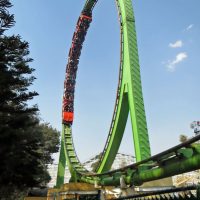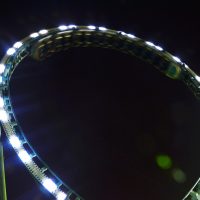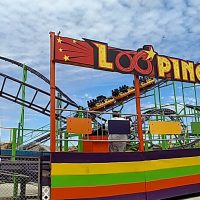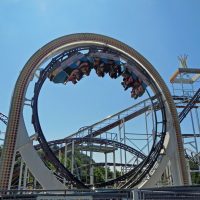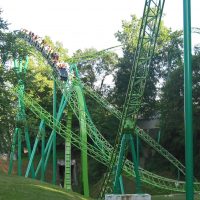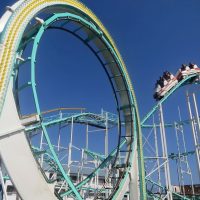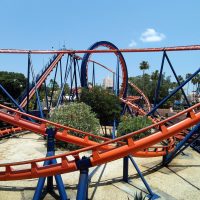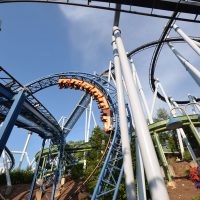a.k.a Looper, loop-de-loop coaster, Zyklon Looper
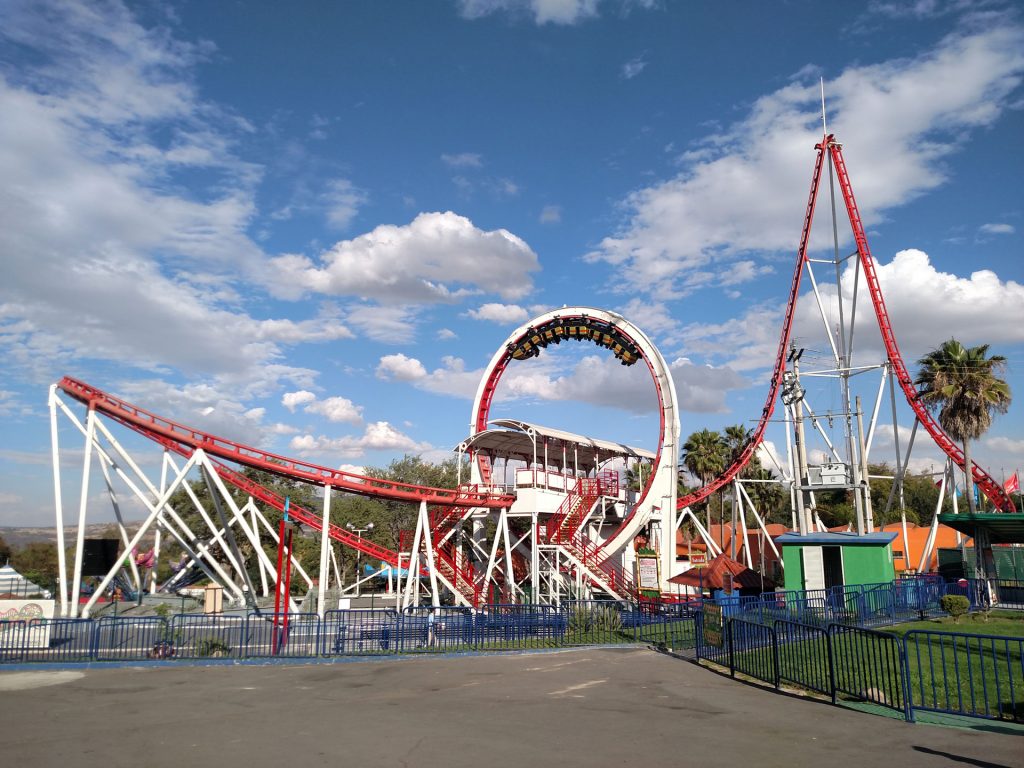
The first looping coasters appeared in the mid-late 19th Century. However, they proved hugely unsuccessful as the loops were circular in design, which requires the cars to take them very fast and has the effect of “snapping” as it roars around the loop. Riders found themselves coming off with very sore necks (at best) and the loop was deemed something of a failure.
In the 1970’s, engineer Werner Stengel calculated the perfect angles for a loop. Stengel discovered that the trick to a safe vertical loop was a clothoid or “teardrop” shape. This shape places the tightest part of the loop at the top, allowing for a gradual entry into the loop, quick flip over, and a gradual exit. It also greatly reduced the speed necessary to complete the loop, and thus minimized forces that had previously caused looping coasters problems. This proved to be a revolution in the history of roller coaster design that is still implemented to this day.
For our purposes here, a traditional looping coaster is one which bases the focus of the ride on vertical loops rather than other types of inversions.
The Original
SCHWARZKOPF LOOPING COASTERS
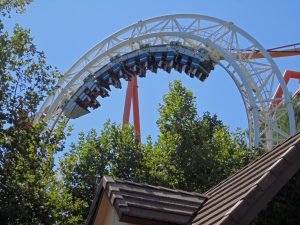
Revolution at Six Flags Magic Mountain in California, USA, was the first successful looping coaster, and the first steel looping coaster. Opened in 1976, the ride paved the way for all modern inverting coasters. For Schwarzkopf, the loop was the centerpiece to modern coasters and the company made a multitude of exciting and intense coasters revolving around multitudes of loops.
Examples:
New Revolution at Six Flags Magic Mountain, USA
Silver Bullet at Frontier City, USA
Montezooma’s Revenge at Knott’s Berry Farm, USA
Scorpion at Busch Gardens Tampa, USA
Variations
PINFARI ZYKLON LOOPING COASTERS

Pinfari‘s looping coasters include a selection of small coasters featuring a single vertical loop, designed to be transportable and compact. Pinfari’s first attempts seem to be around 1982 when their prototype looping model was sold to a Swiss showman. Prefixed with the letters “ZL” (Zyklon Looping) or “TL” (The Loop) you can distinguish if a Pinfari coaster is a looping model or not.
Examples:
Orkanens Øje at Tivoli Friheden, Denmark
Looping Thunder at Oaks Amusement Park, USA
Looping Star at Jolly Roger at the Pier, USA
Montaña Rusa at Mundo Divertido, Mexico
ARROW LAUNCHED LOOP
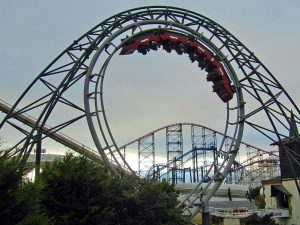
An Arrow Launched Looper is a shuttle coaster consisting of two elevated platforms separated by a single loop. The train is launched with an electric wench from the loading platform, drops down a hill through the loop and then climbs the following hill to the opposite platform before repeating the route backwards.
Lightnin’ Loops at Six Flags Great Adventure (1978-1992) combined two launched loop coasters with interlocking loops, one of which is now Diamond Back at Frontier City in Oklahoma.
Examples:
Diamond Back at Frontier City, USA
Revolution at Pleasure Beach Blackpool, UK
Sidewinder at Elitch Gardens, USA
